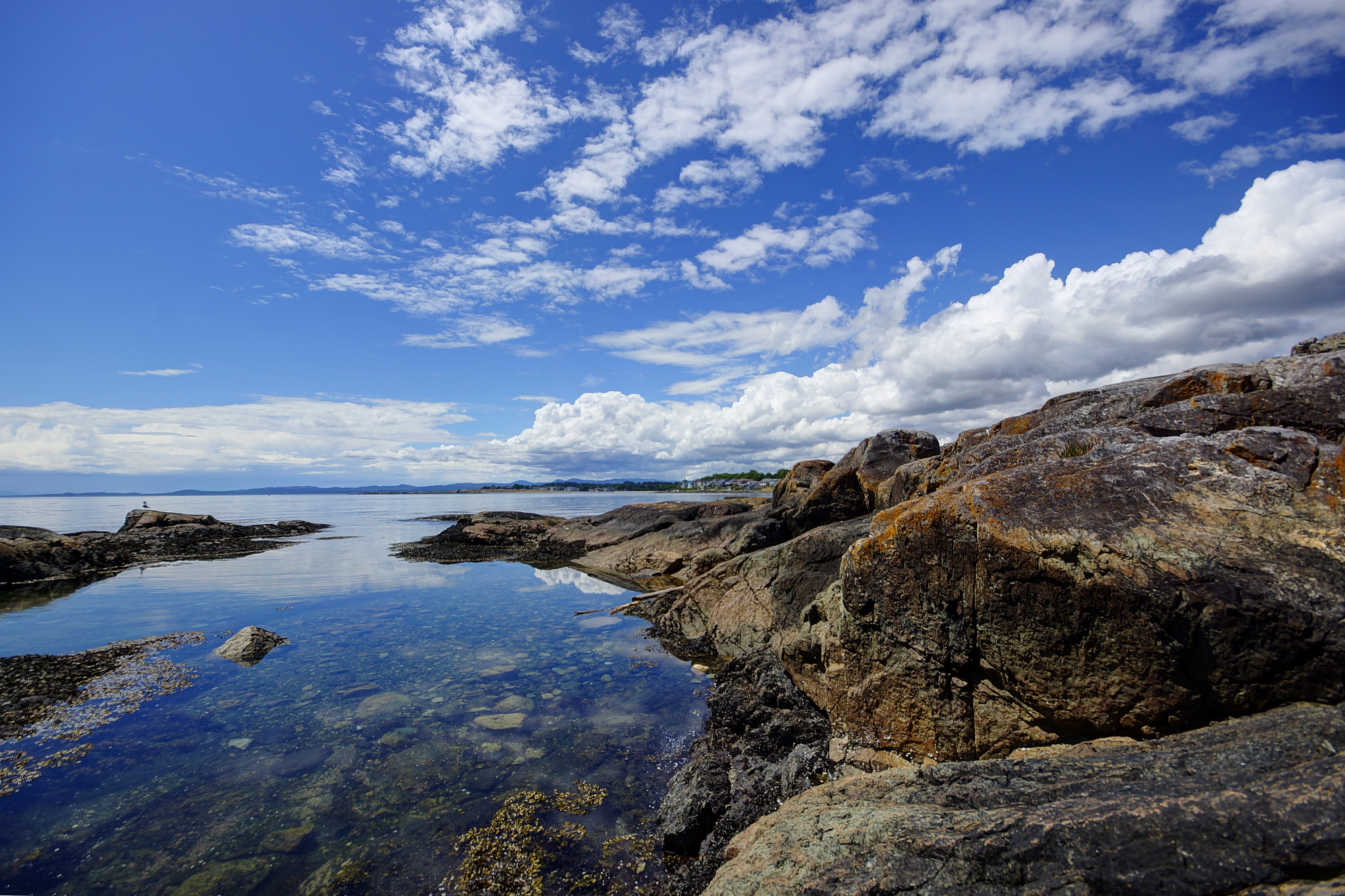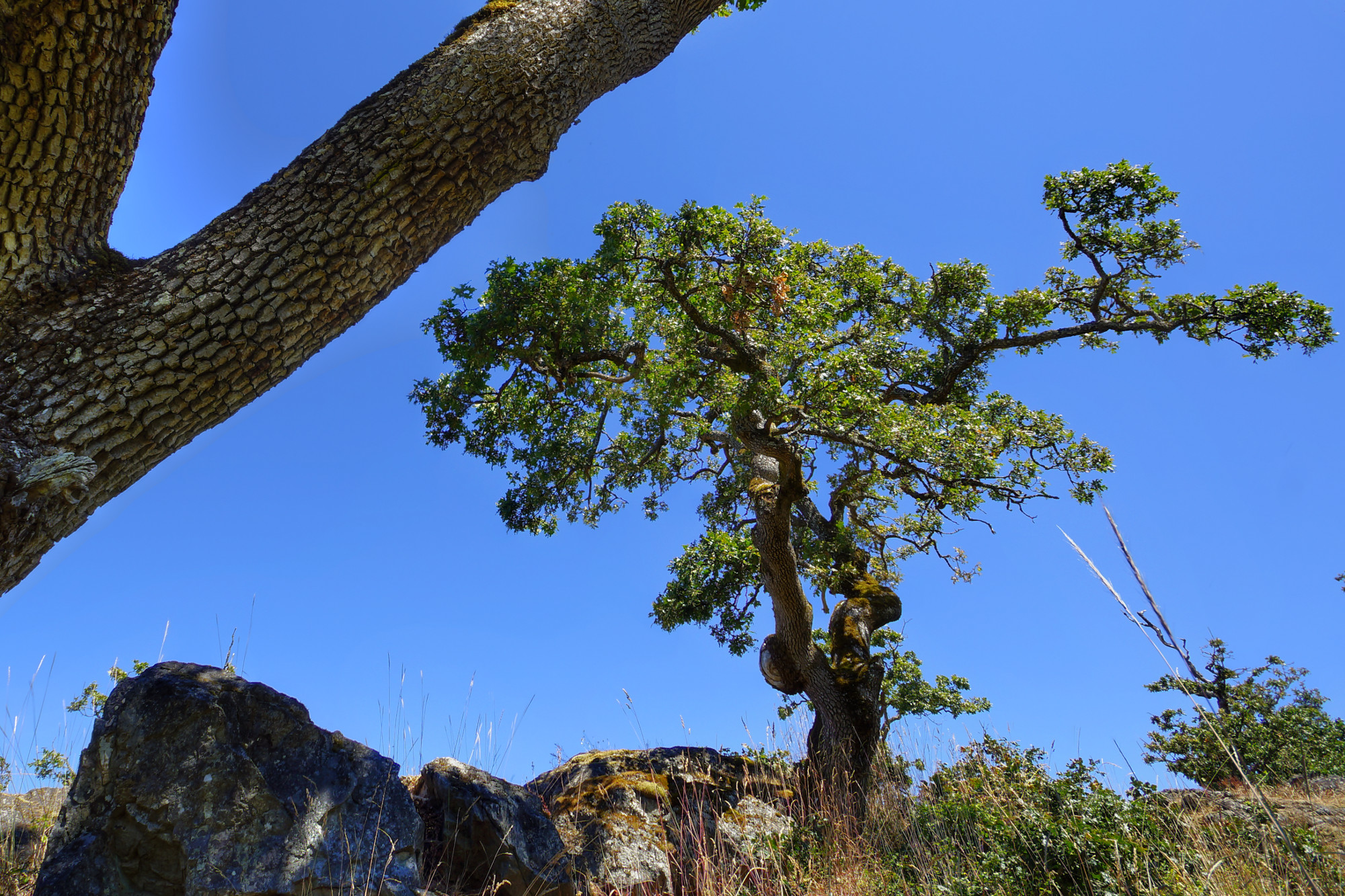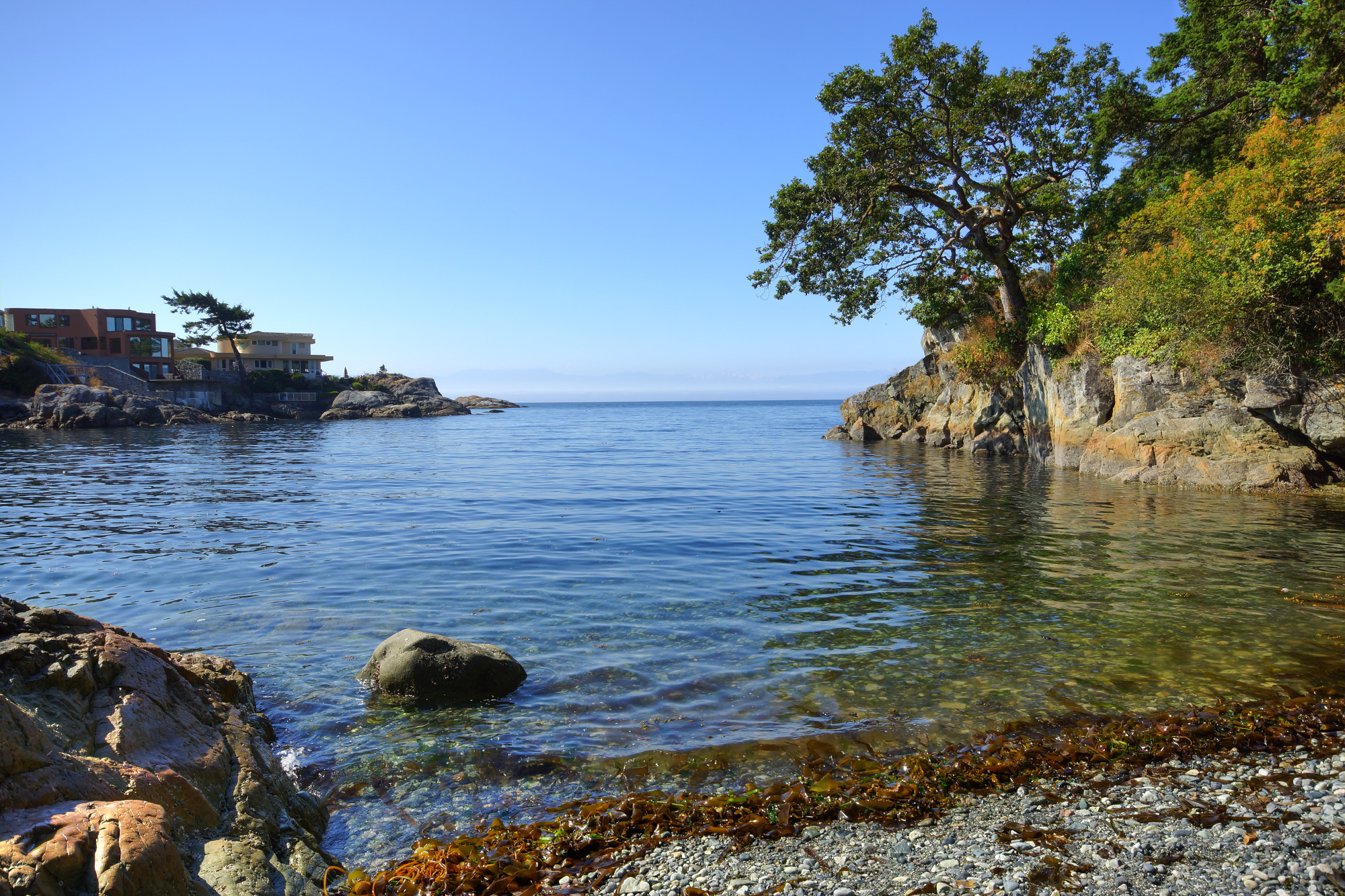
Custom Search
Saturday, August 31, 2013
Trumpeter Swan (Cygnus buccinator)
Whenever I am out at Esquimalt Lagoon I always look for this lone Trumpeter Swan who has taken up residence there. Trumpeter Swans are the heaviest native birds in North America and this one is large - and fast. He was paddling along the shoreline so rapidly I nearly had to run to keep up with him. You can also gauge his speed by the bow wave in front of him. Below is a rather large panorama of Esquimalt Lagoon, where today's and yesterday's bird photos were taken. If you click it you will see a larger version. Click it again and it will blow up even larger and you can scroll back and forth to see the lagoon. It's a lovely, peaceful spot.
Friday, August 30, 2013
Brewer's Blackbird (Euphagus cyanocephalus)
Thursday, August 29, 2013
Sooke Inlet
Fern posted a photo last week of Whiffen Spit, a long narrow spit of land that protects the entrance to Sooke Inlet, an extensive bay only a small part of which is pictured above.
Labels:
Sooke,
Sooke Harbour,
Sooke Inlet,
Victoria BC Canada
Wednesday, August 28, 2013
Tuesday, August 27, 2013
Harling Point
As part of my continued exploration of landscape/seascape photography here's a photo of Harling Point, just around the corner from Gonzales Beach and below the old Chinese Cemetery. I am quite pleased with this photo - the rocks on the right make it work the way I like landscape photography to work.
Labels:
Harling Point,
Victoria BC Canada
Monday, August 26, 2013
Sunday, August 25, 2013
Saturday, August 24, 2013
Bird Portraiture
I must confess that my photographic interests have shifted considerably since I began this blog. I have become progressively more interested in urban and peri-urban wildlife, especially birds. Amongst birds, Great Blue Herons are favorite photographic models of mine since they are large, numerous and stand perfectly still for long periods of time. They do, however, tend to wear a rather bleak expression and look a little scruffy, especially around their heads. This fellow poses quite conveniently near the West Bay Walkway most mornings.
Friday, August 23, 2013
Here's Lookin' at Ya!
My morning walk along the West Bay Walkway seems to get more and more like a visit to the zoo lately. I've posted pictures of Northern River Otters before and usually remark on how they seem quite comfortable with people nearby and just go about their business without paying any attention to passersby. This trio, however, really took notice of me when I stopped to take their photo. Every time the shutter clicked they stopped what they were doing and looked up at me, not fearfully but with interest. It's always a little exciting to watch wildlife, but when the wildlife watches back it's even better.
Thursday, August 22, 2013
Wednesday, August 21, 2013
Foggy Morning
Though we are still in summer, we've had a few foggy mornings lately when a cold mist drifts in over the city from the strait.
Labels:
fog,
Inner Harbour,
Victoria skyline,
West Bay Walkway
Tuesday, August 20, 2013
Puget Sound Gumweed (Grindelia integrifolia)
In yesterday's photo of Whiffen Spit you can see some yellow flowers scattered here and there on both sides of the trail. Above is a close-up of this hardy wild flower, Puget Sound Gumweed (Grindelia integrifolia). If you look closely at the buds just below the flower you can see some gooey, milky, sticky latex. I suspect the plant exudes this substance for protection from pests and predators. In any case it is the reason the numerous species of this plant are called Gumweed. Though everything else is dried up and brown this "weed" provides a welcome bit of color.
Monday, August 19, 2013
Whiffen Spit Park
Just up the coast, past the busy little town of Sooke lies a lovely park, although very long and skinny! A spit of land that runs 1.1 km, it shelters the Sooke Inlet from the open waters of the Strait of Juan De Fuca. A well spent afternoon. - Fern
Labels:
BC,
Fern Long,
rope swing,
Sooke,
Strait of Juan de Fuca,
Whiffen Spit Park
Sunday, August 18, 2013
Saturday, August 17, 2013
Blackberry Season
It's that time of year when I find myself pausing at the edges of vacant lots to reach in for these juicy black treats. I almost always go home with a few wounds from their sharp, aggressive prickles but it's worth it. Their unique and delicious flavor carries me back to childhood every year.
Labels:
blackberries,
Vic West,
Victoria BC Canada
Friday, August 16, 2013
Seal Slap
On my morning walk along the West Bay Walkway seldom a day passes but I see something interesting and new (to me). What you're seeing here is a Harbor Seal (Phoca vitulina) engaged in some communicative behavior. Harbor Seals communicate underwater vocally but they also communicate by slapping the water or themselves with their flippers as in the above photo. Normally they swim around without a lot of splashing. However, to mark a fishing territory or during mating they also use this slapping communication method. You can see (and hear) a few slaps in the short video below. There were several of these seals slapping while I watched and they continued for about twenty minutes.
Thursday, August 15, 2013
Witty's Lagoon Regional Park
Here is a view of part of the beach at Witty's Lagoon Regional Park. There is a series of lagoons on the coast of Vancouver Island west of Victoria. Closest to the city is Esquimalt Lagoon, next to it is Albert Head Lagoon and a little further along the coast is Witty's Lagoon. Each of these lagoons has a good beach on the seaward side and though they are popular, they are long beaches so there is always plenty of room. Visible offshore at Witty's is Haystack Island, pictured above.
Labels:
beach,
Metchosin,
Victoria BC Canada,
Witty's Lagoon
Wednesday, August 14, 2013
Blacktail Doe (Odocoileus hemionus columbianus)
While on my way out to Witty's Lagoon the other day I couldn't resist stopping to photograph this lovely Blacktail Doe browsing in the bushes at the edge of the road. She's still a little thin, probably from feeding one or two fawns but is now concentrating on fattening herself up for winter.
Tuesday, August 13, 2013
Horne Lake Part 2
Last week I posted some pictures from Horne Lake Regional Park but I completely overlooked our unusual accommodation - teepees! They were really quite a nice way to camp and had LOTS of headroom. - Fern
Labels:
BC,
Fern Long,
Horne Lake Camp Ground,
teepees,
Vancouver Island
Monday, August 12, 2013
Marsh Hawk (Circus cyaneus)
| While strolling on the forest trails near Hatley Castle on the weekend I left a part of my camera tripod there. I returned yesterday but was unable to find the missing piece. However, since I was out there near Esquimalt Lagoon I decided to see if I could locate a couple of Belted Kingfishers I saw flying past earlier in the week. No luck on the Kingfishers but as I rounded a corner on the road behind the lagoon I spied a large bird on the ground whose photos make today's post. This is a female Marsh Hawk (Circus cyaneus), also known as the Northern Harrier. Though they are not uncommon, as is the case with so many of our local birds I had not seen one before. The bird has a number of distinguishing characteristics, two of which are visible in the photo to the left: Its wing tips look like they have been dipped in black ink and it has a clearly defined white rump. |
Labels:
Circus cyaneus,
Colwood,
Esquimalt lagoon,
Marsh Hawk,
raptors,
Victoria BC Canada
Sunday, August 11, 2013
Big Tree
So when Benjamin Madison told me about the big trees on the campus of Royal Roads University, I was intrigued. What an experience to turn off the very busy Sooke Road, and step into this other world. Out of the blazing sun and roaring traffic and in among this giant old trees. I highly recommend it. - Fern
Labels:
Charlie's Walk,
Fern Long,
Royal Roads,
Victoria BC Canada
Saturday, August 10, 2013
Orchid Invader - Epipactis helleborine
While on my walk in the woods near Royal Roads University last week I noticed this little flowering plant. The flowers are very small, about the size of your little fingernail. When I stooped to look at it more closely I realized it was probably another of our local orchids and it is, although it is an invader from Europe, apparently arriving on this continent in 1879. This is Helleborine (Epipactis helleborine). Lewis J. Clark (Wildflowers of British Columbia), who rises to poetry in his descriptions of almost anything that comes out of the ground in this province, describes Helleborine as "...an invasive, almost weedy plant." But though it's quite modest in comparison with its more colorful and larger relatives, I was pleased to add another local wild orchid to my collection.
Friday, August 9, 2013
Purple Martin (Progne subis)
| Sometimes it seems like ecological disaster is inevitable and within a generation or two life on this planet will be very unpleasant. So it's nice to see that some of our changes are working and it is possible to reverse some damage. I was pleased to mention a few weeks ago the recovery of the Osprey population whose numbers were declining until DDT was banned. The local population of today's featured bird, the Purple Martin (Progne subis), was also in decline and they had almost disappeared from this area thirty years ago. This was thought to be due to competition for suitable nest sites from invasive species such as European Starlings, and because of the removal by humans of favored natural nesting sites such as dead trees. The resurgence in their population is due to the provision of nesting boxes such as pictured to the right. These have been designed to be especially attractive to Purple Martins and less attractive to competing species. The wire netting over the top and sides at the front of the nest is to prevent seagulls from snacking on the fledglings when they take their first peeks out the doorway. Above on the left is a male Purple Martin with a female of the species on the right. This colony of Purple Martins resides on the north shore of Esquimalt Lagoon below Royal Roads University and Hatley Castle. There is an article about them HERE. |
Thursday, August 8, 2013
Least Sandpiper (Calidris minutilla)
| I recently went out to Royal Roads University to check out some of the forest trails that lie beside the Hatley Park National Historic Site. I've heard there are some huge old growth trees there as much as 500 years old. I had a splendid walk through the forest but did not see the trees.... Anyway, the trail I was on exited from the forest on the northern inland shore of Esquimalt Lagoon. While I often visit this lagoon, which is a bird sanctuary, I have not visited this shore of it before. I was rewarded by sighting two species new to me, the Least Sandpiper (Calidris minutilla) pictured above and to the left, and some Purple Martins we'll see in a day or two. The Least Sandpiper is the smallest North American shorebird (just a little larger than a sparrow)and is almost indistinguishable from its other slightly larger relatives. Its distinguishing characteristic is its yellowish legs. The otherwise unremarkable photo to the left does have the virtue of clearly showing the yellowish legs on a couple of the birds. |
Wednesday, August 7, 2013
Deep In the Woods
This is another one from Horne Lake Regional Park taken while hiking in the woods while the braver members of my family ventured into the belly of the mountain. Apparently I'm superficial when it comes to mountains. - Fern
Labels:
Fern Long,
Horne Lake Camp Ground
Tuesday, August 6, 2013
Mount Mark
Like alot of British Colombians the long weekend in August is for one thing; camping. We headed up island to Horne Lake Camp Ground, just inland from Qualicum Beach. This is a fabulous spot for so many outdoor activities, swimming, boating, hiking and exploring the nearby caves. - Fern
Labels:
Fern Long,
Horne Lake Camp Ground,
Mount Mark
Monday, August 5, 2013
Landscape 5 - Highrock Park - Garry Oaks
The wonderfully gnarled branches of Garry Oaks make great studies in winter but I am even more fond of the deep green of their leaves and the rich fissured texture of the bark on their trunks, especially on crackling hot summer days like this.
Sunday, August 4, 2013
Landscape - Seascape - Saxe Point Park
Here's a favorite scene of mine. Saxe Point is demarcated by two little coves. This is the cove on the east side of the point and it's a beautiful spot at any time of year. Click here to see what this scene looks like in the winter.
Labels:
Esquimalt,
Saxe Point Park,
Victoria BC Canada
Saturday, August 3, 2013
Summer Hummer
While on my morning walk along the West Bay Walkway the other day I noticed this little bird taking a break. Usually I don't see much more of these hummingbirds than the buzz as they zoom past. I believe this is a female Anna's Hummingbird (or a juvenile of either gender) since whenever I see adult males in this area they are members of that species.
Friday, August 2, 2013
Hatley Castle 3 - The Italian Garden
Hatley Park National Historic Site consists of the castle and the adjacent gardens. Directly beside the house is the Italian Garden, pictured above and below. It's a very formal garden with trees in tubs and immaculately trimmed and squared hedges, lawns and beds of flowers.
Click here to see what the castle looks like from across the lagoon, in the autumn.
Click here to see what the castle looks like from across the lagoon, in the autumn.
Thursday, August 1, 2013
Summer Seal
I was down at Fleming Beach a few nights ago and was pleasantly surprised by seeing no less than five Harbor Seals lolling around in the clear water near the fishing dock. I think they wait there for sport fisherman to bring their boats in and clean their fish. There's usually plenty of scraps. These seals were really enjoying a lazy evening in the water while waiting for the boats to come in, some of them floating on their backs and others nudging and rolling over each other.
Subscribe to:
Posts (Atom)





